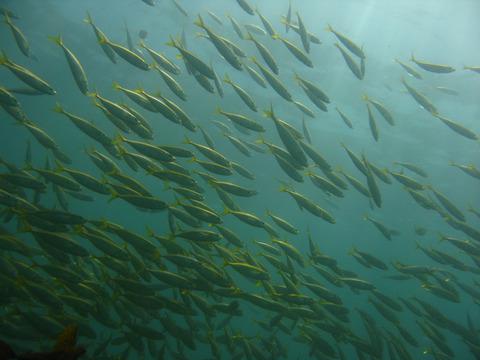当前位置:
X-MOL 学术
›
Funct. Ecol.
›
论文详情
Our official English website, www.x-mol.net, welcomes your
feedback! (Note: you will need to create a separate account there.)
Differences in oxidative status explain variation in thermal acclimation capacity between individual mosquitofish (Gambusia holbrooki)
Functional Ecology ( IF 4.6 ) Pub Date : 2020-04-10 , DOI: 10.1111/1365-2435.13563 Isabella Loughland 1 , Frank Seebacher 1
中文翻译:

氧化状态的差异解释了单个蚊子(Gambusia holbrooki)之间热适应能力的变化
更新日期:2020-04-10
Functional Ecology ( IF 4.6 ) Pub Date : 2020-04-10 , DOI: 10.1111/1365-2435.13563 Isabella Loughland 1 , Frank Seebacher 1
Affiliation

|
- Evolutionary theory predicts that the capacity to acclimate should be favoured in variable environments. However, perfect compensation for thermal variation is rare and the capacity for thermal acclimation can vary considerably between individuals within natural populations. This variation may be explained by costs associated with acclimation, but it is not clear what these costs are.
- We tested the hypothesis that oxidative stress is a cost of acclimation that could explain the variation between individuals in acclimation capacity. We acclimated individual mosquitofish Gambusia holbrooki (n = 416) to 18 and 28°C sequentially, and determined swimming performance at each temperature to evaluate their acclimation capacity. Fish were then acclimated to either cold (18°C) or warm (28°C) conditions, and we increased antioxidant capacities of a subset of fish experimentally by administering N‐acetyl cysteine (NAC). We measured H2O2 production, catalase antioxidant activities and oxidative damage to proteins and membranes.
- We show that there is significant variation in acclimation capacity between individuals, and that there is a trade‐off between acclimation capacity and swimming performance in warm conditions. Mean swimming performance across both acclimation temperatures increased with increasing acclimation capacity, but the increase was small biologically. Hence, greater thermal plasticity (high acclimation capacity) resulted in only minor performance benefits across acclimation conditions. We verified this rather surprising result in replicate populations grown in outdoor mesocosms.
- Reactive oxygen species production, antioxidant activities and oxidative damage were higher in cold‐acclimated fish, and particularly in those fish with low capacity for acclimation. However, experimentally increasing antioxidant capacities with NAC alleviated these changes to oxidative status, suggesting a causal relationship. Hence, oxidative stress may be a cost that constrains the capacity for acclimation. Together, the performance trade‐off and oxidative cost indicate that phenotypic plasticity is not always advantageous in variable environments, and instead bet‐hedging may be a more beneficial strategy, particularly in short‐lived species.
中文翻译:

氧化状态的差异解释了单个蚊子(Gambusia holbrooki)之间热适应能力的变化
- 进化论预测,适应环境的能力应在变化的环境中得到重视。但是,很少有针对热变化的完美补偿,并且自然种群中个体之间的热适应能力可能会大大不同。可以通过与适应相关的成本来解释这种变化,但是尚不清楚这些成本是多少。
- 我们检验了氧化应激是适应成本的假设,该假设可以解释个体之间适应能力的差异。我们 依次使单个蚊鱼Gambusia holbrooki(n = 416)适应18和28°C,并确定每种温度下的游泳性能以评估其适应能力。然后使鱼类适应冷(18°C)或温暖(28°C)的条件,我们通过施用N-乙酰半胱氨酸(NAC)实验性地提高了一部分鱼的抗氧化能力。我们测量了H 2 O 2的产生,过氧化氢酶的抗氧化活性以及对蛋白质和膜的氧化损伤。
- 我们表明,个体之间的适应能力存在显着差异,并且在温暖条件下适应能力与游泳性能之间存在折衷。两种适应温度下的平均游泳表现都随着适应能力的增加而增加,但生物学上的增加很小。因此,更大的热可塑性(高适应能力)在适应条件下仅产生较小的性能优势。我们证实了在室外中观世界中复制种群的增长这一令人惊讶的结果。
- 冷适应鱼的活性氧产生,抗氧化活性和氧化损伤较高,特别是适应能力低的鱼。但是,实验上使用NAC增加抗氧化剂的能力可以缓解这些氧化状态的变化,表明存在因果关系。因此,氧化应激可能是限制适应能力的成本。综合考虑性能折衷和氧化成本,表型可塑性在变化的环境中并不总是有利的,而对冲交易可能是一种更有益的策略,尤其是在短命物种中。











































 京公网安备 11010802027423号
京公网安备 11010802027423号